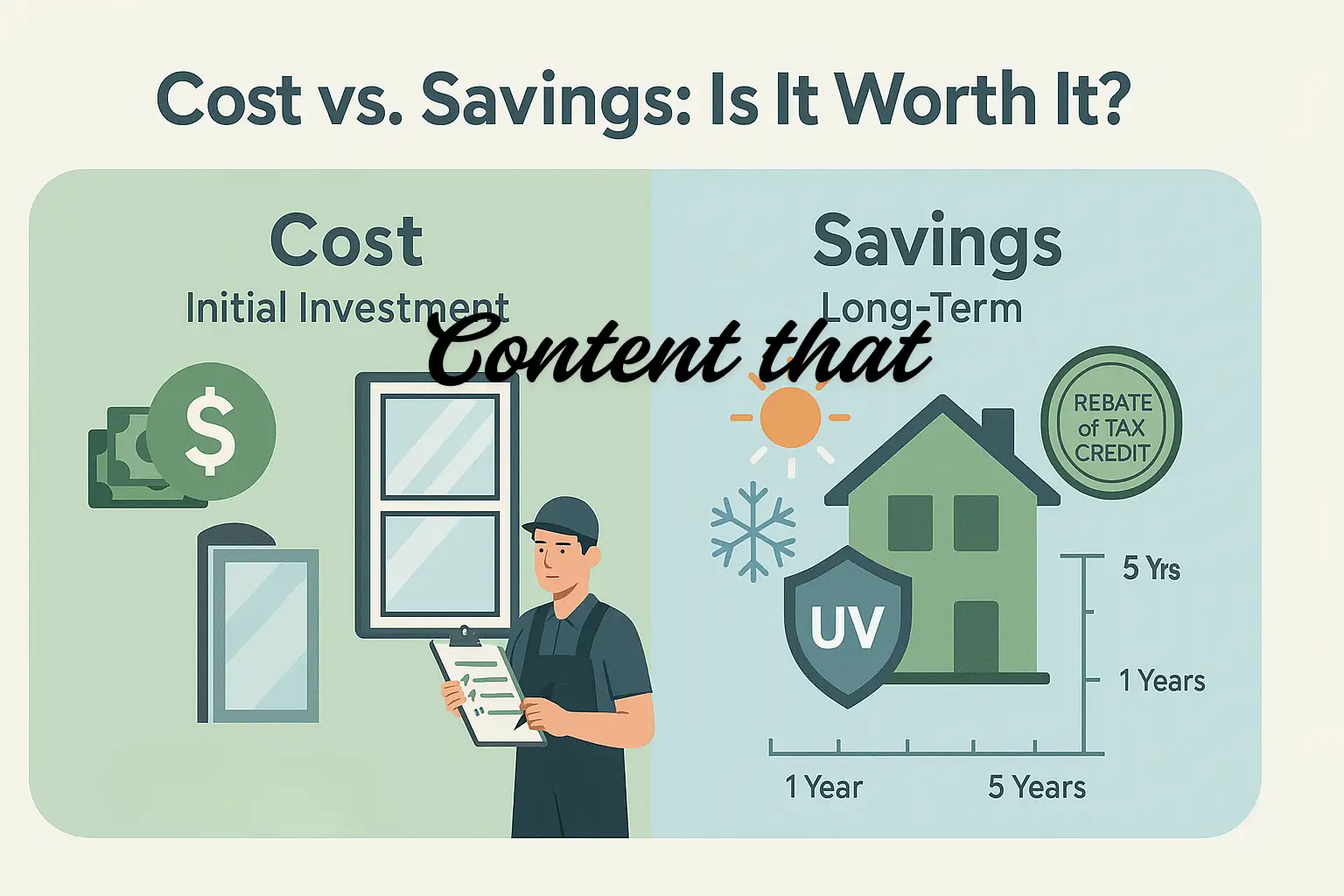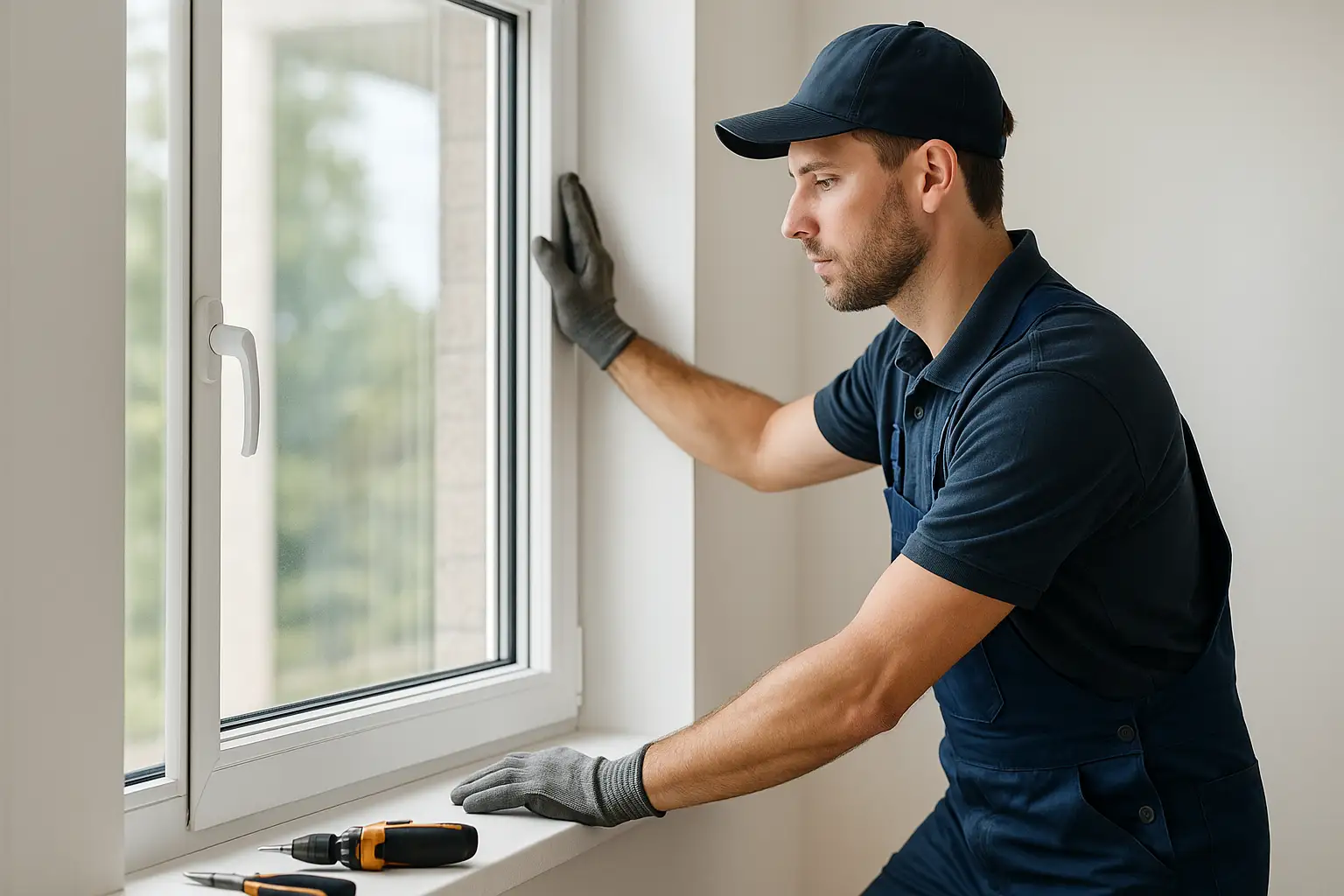If you’ve ever sat near a window and felt like you were either in a sauna or an icebox, you’re not alone. The secret to maintaining indoor comfort and cutting energy bills often lies in one invisible upgrade: Low-E glass.
However, while choosing the right glass is crucial, proper installation is what truly determines its effectiveness. Here’s what you need to know before attempting a DIY approach.
What Is Low-E Glass?
Low-emissivity glass is specially coated to reflect infrared and ultraviolet light, improving energy efficiency without compromising natural light. It’s designed to keep heat in during the winter and out during the summer, all while protecting interiors from UV damage.
How Low-E Glass Enhances Energy Efficiency
According to the U.S. Department of Energy, Low‑E coatings reduce energy loss by as much as 30–50% compared to ordinary window glass. Low-E glass works like a silent barrier between your home and the elements. Its microscopic metallic coating reflects infrared heat, keeping warmth indoors during winter and deflecting it in summer. This allows your HVAC system to work less, which translates to noticeable energy savings. Importantly, it does this while still allowing visible light to pass through, so you get bright rooms without the heat.
It’s not just about temperature regulation. Low-E coatings block up to 99% of harmful UV rays, which helps prevent your furniture, rugs, and artwork from fading over time. The result? Lower utility bills, longer-lasting interiors, and a more comfortable living environment year-round.
I first experienced the difference when I replaced the aging windows in my studio with Low-E units. That summer, my electricity bill dropped by nearly 20%, and I was shocked at how much more evenly the room held its temperature, even during peak heat hours. That’s when I became a total Low-E convert.
Why DIY Installation Isn’t Recommended
Installing Low-E glass isn’t your average weekend project. It requires precision, specialized tools, and a clear understanding of thermal performance and window system compatibility. Even minor errors, like uneven placement, poor sealing, or incorrect alignment, can compromise the insulative properties of the glass.
What most DIYers don’t realize is that incorrect installation can lead to thermal bridging, moisture buildup, or even glass stress fractures over time. These issues not only reduce the window’s energy efficiency but may void warranties from both manufacturers and energy programs.
Certified professionals ensure a tight, secure fit, proper weatherstripping, and full integration with your home’s envelope. That kind of expertise doesn’t come from a YouTube tutorial—it comes from training and hands-on experience.
Benefits of Professional Installation
When it comes to Low-E window upgrades, professional installation isn’t just a nice-to-have—it’s essential. Experts bring the knowledge and precision needed to ensure your windows perform at their best, both now and for years to come.
Key Benefits:
-
Proper handling of Low-E coatings, frame materials, and multi-pane glass systems
-
Installation tailored to your home’s window orientation and climate conditions
-
Attention to seal integrity to prevent air leakage and moisture issues
-
Awareness of thermal expansion to avoid long-term warping or cracking
-
Improved UV protection and heat transfer reduction for better energy efficiency
-
Lower energy bills and reduced wear on HVAC systems
-
Fewer future repairs thanks to the correct initial installation
Choosing a trusted installer like Hansen Glass Inc. means you’re not just buying a product—you’re investing in long-term comfort, efficiency, and peace of mind. From expert consultation to flawless execution, they handle every detail so you don’t have to.
Cost vs. Savings: Is It Worth It?
When it comes to Low-E glass, the value isn’t just in the material; it’s in the long-term performance. Professionally installed Low-E windows offer measurable benefits in the form of energy efficiency, indoor comfort, and protection for your interiors.

Over time, you’ll notice fewer temperature fluctuations in your home, reduced strain on your heating and cooling systems, and a more stable indoor environment throughout the seasons. Add to that the peace of mind that comes from reduced UV damage and longer-lasting window units, and it becomes clear: this isn’t just a window upgrade—it’s a lifestyle improvement.
Even better, certain installations may qualify for energy-efficiency programs or rebates, adding another layer of value to a professionally handled project.
Types of Low-E Glass Coatings
Low-E glass isn’t one-size-fits-all. There are two main types of coatings, passive and solar control, each tailored for different climate needs and performance goals.
Passive Low-E coatings are designed to retain heat, making them ideal for colder climates. They allow solar gain while still reflecting interior heat back into the room. On the other hand, solar control Low-E coatings are optimized for warmer environments, limiting solar heat gain to keep interiors cooler without sacrificing natural light.
The difference lies in the number of coatings and how they are layered. Some windows feature double or triple glazing with argon or krypton gas fills between panes, paired with Low-E coatings to enhance insulation.
Choosing the right type depends on your home’s location, orientation, and energy goals. That’s why consulting with experienced professionals, like those at Hansen Glass Inc., can ensure you get a setup that fits your specific needs, not just the specs on paper.
Common Myths About Low-E Glass
| Myth | Reality |
| Low-E glass makes windows look tinted or dark | The coating is ultra-thin and virtually invisible—it doesn’t reduce clarity or brightness. |
| It blocks natural light | Low-E selectively blocks infrared and UV rays, but lets visible light shine through. |
| The coating wears off over time | It’s sealed between panes during manufacturing and is highly durable in double/triple glazing. |
| It’s only for cold climates | Low-E glass improves energy efficiency in both hot and cold climates, reducing overall energy use. |
| Low-E windows are too expensive to be worth it | While the upfront cost is slightly higher, the energy savings and comfort often outweigh it. |
Finding the Right Installer
Choosing the right Low-E glass installer is just as critical as choosing the glass itself. You want a team that understands thermal dynamics, is well-versed in modern glazing systems, and takes the time to evaluate your home’s unique needs.
Look for companies with a proven track record, certified technicians, and a portfolio that reflects both quality work and customer satisfaction. Don’t hesitate to ask about warranties, material sourcing, and how they handle post-installation support.
That’s where professionals like Hansen Glass Inc. really shine. With a focus on precision, energy efficiency, and customized service, they ensure your investment pays off in performance, comfort, and peace of mind.
Because when it comes to Low-E glass, expert installation isn’t a luxury; it’s the final piece of the puzzle.
Ready to Upgrade Your Windows?
If you’re planning to install Low-E glass and want it done right the first time, trust the experts who know your climate, codes, and comfort needs.
Serving Parker, CO, and surrounding areas, Hansen Glass Inc. delivers precision installation and personalized service backed by decades of experience.
Schedule your consultation today and see how Smarter Glass can transform your home.
Final Thoughts
Low-E glass is one of those rare upgrades that combines comfort, efficiency, and long-term value in one invisible layer. But its true performance depends on more than just the product; it depends on how it’s installed.
From precise sealing to climate-specific recommendations, professional installation ensures your windows work exactly as designed. And when done by experienced specialists like Hansen Glass Inc., you’re not just buying glass, you’re investing in smarter living.
So if you’re thinking about upgrading your windows, don’t just ask what to install. Ask who should install it.
FAQs
Q: What does Low-E stand for in windows?
A: Low-E stands for “low emissivity,” referring to a thin, invisible coating that reflects heat and blocks UV rays while allowing visible light through.
Q: Is Low-E glass worth the investment?
A: Absolutely. It improves energy efficiency, reduces UV damage to interiors, and enhances indoor comfort—all while lowering heating and cooling demands.
Q: Can I install Low-E windows myself?
A: It’s not recommended. Improper installation can lead to energy loss, moisture intrusion, and voided warranties. Always hire a professional installer.
Q: Does Low-E glass make a room darker?
A: No. Low-E coatings are virtually invisible and don’t reduce natural light. They block heat and UV rays without affecting brightness.
Q: What’s the difference between passive and solar control Low-E coatings?
A: Passive coatings retain heat and are better for cold climates. Solar control coatings block heat and are ideal for warmer environments.
Q: How long does Low-E glass last?
A: When properly installed, Low-E glass can last decades. The coating is sealed within multi-pane units, protecting it from wear or damage.


